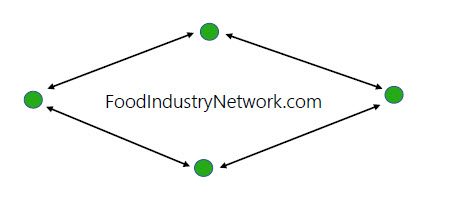Be optimistic with grain storage system plans

Glacier FarmMedia – Planning a storage system means being optimistic, future-focused and strategic.
Read Also
Hybrid catalyst makes fertilizer, cleans wastewater
The manufacturing of synthetic nitrogen fertilizer is an energy- and carbon-intensive process and creates nitrate-containing runoff. Researchers have long sought…
It isn’t something faced only when a big crop is coming and there’s not enough room to store it.
“It starts with a plan,” said Derek Johnson, as he stood in the lee of the giant grain bin system AGI built on the site of Ag in Motion, an outdoor farm show near Saskatoon.
Why it matters: An accurate assessment of a farm’s needs, done before building a grain storage system, can avoid future problems.
Problems can arise if grain storage systems are developed in a panicked rush or without a long-term plan.
Yet that is often the case due to the reality of farming. Most farms already have a lot of storage and developed yard with truck access, though there always seems to be something to improve.
Looking at the long term might not be a priority during the rush of a busy crop year, but bin and handling decisions made today might stick with the farm for 40 years, so they’re worth thinking about, Johnson said.
First, a farmer needs to know what they can produce in a good year and what they’re likely to store in coming years.
“Don’t plan for your average year or the drought year. Plan for your best year,” said Johnson. “Don’t be forced to dump your grain.”
With a good assessment of reasonable storage needs, a farmer can assess what their handling system could look like. For instance, many farms in wet areas might want “wet” bins connected to a grain dryer, from which grain can be conveyed into the dry bins. That requires careful system engineering.
Truck, auger and machinery access is critical. The bins may fit nicely into the yard, but without sufficient planning, farmers may have trouble loading or unloading grain, moving it, or having good truck access.
An improperly oriented bin can become a management nightmare.
“Understanding which way they should be pointing can be confusing,” said Johnson.
If a farmer plans a new system, will they also have to buy a new handling system, or is existing equipment enough? Will augers work, or should a new bucket elevator system be incorporated?
These are challenging and expensive decisions. That’s why most new projects are done in pieces, although they’re anything but piecemeal. After careful consideration, construction can take years.
“In the course of two, three, four years, they’re building the system up,” said Johnson. “It’s a phased approach. It’s not going to be done in one shot.”
That’s partly because of complexity, as well as the cost of bins, concrete and handling equipment. It can be complicated to arrange bin crews and other labour needed for installation.
That means farmers have the time to get things right before they start.
Critical to that is site preparation, Johnson said. Today’s 10,000-plus bushel hopper-bottom bins carry a tremendous weight of grain.
“There’s a lot of downward force,” said Johnson.
A proper bed of gravel and concrete on a well-cleared site avoids problems later.
– This article was originally published at The Western Producer.
Source: Farmtario.com

